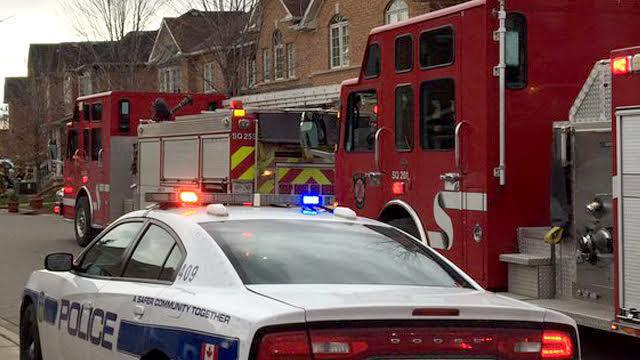Some Neighbourhoods Set to Receive Free Smoke Alarms in Brampton
Published April 9, 2018 at 2:02 am

If you live in one of three specific neighbourhoods in Brampton that are hot zones for residential fires, you could be getting a free smoke alarm very soon.
If you live in one of three specific neighbourhoods in Brampton that are hot zones for residential fires, you could be getting a free smoke alarm very soon.
Recently, Brampton Fire and Emergency Services (BFES) identified the three neighbourhoods that have the most fires in Brampton: Armbro Heights in the southern end of Brampton, Ridgehill in central-west Brampton, and City Centre near Bramalea City Centre (BCC).
Now, on Tuesday April 10, Brampton’s Fire Chief Bill Botes, Brampton Fire crews, Mayor Linda Jeffrey, and Councillors Palleschi and Bowman are set to knock on doors in those hot zones, chat with residents about fire safety, and hand out smoke alarms.
Mayor Jeffrey and Councillors Palleschi and Bowman are personally donating 100 smoke alarms to the initiative, according to the city.
This is all part of a five-year strategy to reduce the number of fires in those areas.
From 2012 to 2017, those three neighbourhoods alone saw 250 fires. That’s 32 per cent of all Brampton residential fires, according to BFES.
The biggest cause of resident fires? Unattended cooking.
In the past six months, BFES said in a recent release that they have promoted fire safety through social media advertising to these specifical areas, increased advertising in local community spots, incorporated fire truck messaging, put messaging on TV screens in high rises, visited homes, apartments, schools, and community gathering areas, and participated in community events?
What tips can you follow to stay safe from fires?
- Always stay in the kitchen while cooking, and don’t cook when you’re sleepy.
- Never use barbecues or other cookers in your garage.
- Install smoke alarms on every storey and outside all sleeping areas of your home.
- For added protection, install a smoke alarm in every bedroom according to manufacturer’s recommendations.
- Test smoke and carbon monoxide alarms monthly by pressing the test button. Change the batteries every year.
- Smoke and carbon monoxide alarms wear out over time. Replace alarms according to manufacturer’s recommendations.
- If you smoke, stay alert, and use deep ashtrays
If you live in one of those hot zones, be sure to answer the door that day!
insauga's Editorial Standards and Policies advertising





